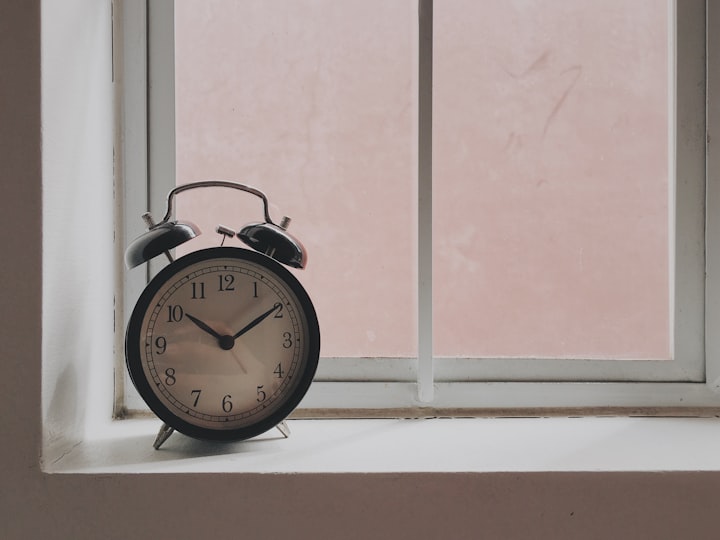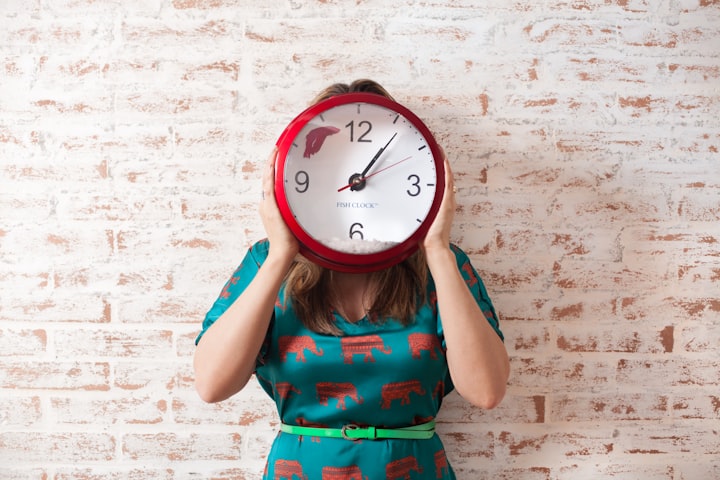Circadian Clock Genes
I’m envious of people who can sleep as long as they want. I have the circadian rhythm of a farmer — Moby

Early to bed, early to rise?
This would be perfect if your were a farmer. But if you are not a farmer and your biological sleep-wake cycle makes you get up at 5 am in the morning and makes you ready to go to sleep before 9 pm in the evening, then your biological sleep-wake cycle is out of sync with the demands of the modern world.
In particular, sleep specialists call this an advanced sleep phase disorder — a circadian rhythm sleep disorder — and the world is full of these short sleepers, who go to sleep early and wake up early.
But the world is full also of long sleepers, the so-called owls, who stay up late and get up late.
Night owls — who are involuntarily unable to fall asleep for several hours after a normal time — may have a delayed sleep phase syndrome a chronic disregulation of a person’s circadian rhythm (biological clock), compared to those of the general population and societal norms.
These two types os sleepers I just mentioned often run in families. But what is the difference between the “owl type” and the “farmer type”? Well, mutations in the clock genes of their internal clocks (body’s circadian clock) that regulate the timing of sleep.
In particular, the “farmer type” has a missense mutation in the gene hPER2 (and CKIdelta). hPER2 is the gene Period2 (Per2) which is the mammalian gene sufficient for the maintenance of circadian rhythms. The gene mutation that helps explain the "night owl" behavior is a mutation in a gene called Cry1 that alters the human circadian clock, which dictates rhythmic behavior such as sleep/wake cycles. Carriers of these gene variant experience nighttime sleep delays of 2–2.5 hours compared to non-carriers.
But let’s see now how the initial discovery in 1971 of the Period gene, in Drosophilla melanogaster (fruit fly), led to our understanding of the circadian rythm and other clock genes like Cry1: The brain, circadian rhythms, and clock genes.
Moreover, deciphering the molecular core clock mechanism in the fruit fly led to the 2017 Nobel Prize in Physiology or Medicine awarded to Michael Young, Michael Rosbash and Jeffrey Hall:The origins and evolution of sleep.
First of all, you need to know that in humans (and other mammals) the internal primary master-body clock (clock that decides when to go to sleep or wake up) is located in the suprachiasmatic nuclei (a bunch of cells) in the hypothalamus, situated directly above the optic chiasm.
The suprachiasmatic nucleus is a cluster of around 10000 neurones located on either side of the midline above the optic chiasma, about 3 cm behind the eyes. And apart having a close anatomical and functional connection to the optic system (for the light input), is also connected to the hormonal system (for a systemic output).
In the case of the Drosophila, the accessory medulla (AMe) — a small neuropil in the Drosophila’s optic lobe — has been proposed to serve as the circadian pacemaker with a function analogous to the role of the suprachiasmatic nucleus in mammals.
Moreover, both insect and mammalian master clocks that influence behavioral rhythms of sleep and wake, connect also to the peripheral clocks — more or less everywhere in your body you have tiny clocks — via a combination of humoral factors and the peripheral autonomic nervous system. Finally, these master clocks have a neuromodulatory function and employ a wide variety of neuropeptides as signaling molecules.
The thing that is important here to note, is that both master clocks and peripherals clocks are just proteins!
In fact, timing (namely our circadian internal clock) is “expressed” as proteins in the individual neurones of the suprachiasmatic nucleus or the accessory medulla, and timing is not an emergent property of a neural circuit. But an integral feature of the biochemistry of the cells in these centers. This means, that the time machinery is genetically specified.
In particular, by analysing the circadian patterns of activity in mutant flies of Drosophila, several genes have been identified that encode essential elements of this clock: like the genes period (per) and timeless (tim) for example. Mutations of these genes can either speed up or slow down the clock, giving flies days of 20 or 28 hours.
We know now, that the proteins per and tim — encoded by the per and tim genes — are components of a self sustaining negative feedback loop, which is now thought to form the driving oscillation of the timing system!
Let's see what that means.
As the proteins per and tim move around the cells, their abundance and location define the circadian time. The genes encoding for per and tim proteins are active in the early part of the night, producing mRNA; subsequently the proteins start to accumulate later in the night. So, per and tim mRNAs are transported to the cytoplasm in the early evening where they are translated into their respective proteins.
Initially, these proteins are rapidly degraded within the cytoplasm especially per. However, per protein has a binding site, which enables it to associate with tim, forming heterodimers. These dimers are much more resistant to degradation, and after association the dimers enter the nucleus. Once in the nucleus the dimers of per and tim suppress their own genes. In the end, the expression of the per and tim genes is suppressed by their own dimerised protein products, and the feedback loop is closed. So, when the clock genes are turned off, no new clock mRNAs are synthesised.
Then after a delay, the existing dimer of per and tim in the nucleus starts to be broken down and the genes are released from inhibition to become active again and reinitiate the cycle. Because of the long lags between gene activation and turn off, the whole sequence takes about 24 hours and is self sustaining.
But, how can internal time based on the "Per-Tim loop" be synchronised to the outside world?
In flies, light seems to destabilise the heterodimers by breaking down tim.
In actual fact, in the presence of light the protein cryptochrome (Cry) binds tim, preventing its dimerization with per and leading to degradation. This cycle continues in constant darkness but is amplified in light–dark cycles, when the blue light receptor cry is activated. Cry physically interacts with tim and the F-box protein JETLAG, and tim is phosphorylated and degraded.
So, when the per–tim heterodimer is accumulating in the early evening, light retards the accumulation of the per–tim dimer and sets the clock back. When per–tim is degrading late in the night, light accelerates this breakdown and sets the clock ahead.
If you want to know more why reading with blue-light emitting screens may desynchronize intrinsic circadian cycles with the natural light-dark cycle you can check the following article on Pubmed Medicine in the fourth dimension.
Furthermore, recent work in Drosophila and mammals has shown that when their master clocks (accessory medulla and suprachiasmatic nucleic respectively) are dissociated and held in vitro, the individual neurones continue to express circadian patterns in their biochemistry and some neurones are being directly photoresponsive. And these clocks are so powerful that the rhythms of a single neurone can be recorded continuously for several weeks in mammals, with only the slightest deviation from 24 hours (auto-regulatory interlocked transcriptional–translational feedback loops/TTLs of clock genes).
But let’s see now how our bodies adjust to the morning/night cycle:Mechanisms of Communication in the Mammalian Circadian Timing System.

The 24h rhythm in our physiology is organised by a body-wide network of endogenous circadian clocks. In mammals, the central (primary clock) pacemaker in the hypothalamic suprachiasmatic nucleus (SCN) integrates external light information to adapt all peripharal cellular clocks in all tissues and organs to the external light-dark cycle. Together, central and peripheral clocks co-regulate physiological rhythms and functions.
Τhe peripheral clocks exist in almost every cell and are synchronized to ensure the adaptation of physiology to external time. These circadian clocks are characterised by their self-sustained rhythms which are temperature compensated and brought into a specific rhythm by periodic external stimuli, so-called zeitgeber (German for “time giver”).
Initially, the central clock SCN receives photic input from the retina but receives also non-photic input. Then the neurones in the SCN, convey this temporal information to other clocks in the brain and peripheral tissues through neural projections and humoral signals.
The idea of a strict hierarchical organization of the circadian system around the central clock in the SCN has been replaced by the concept of a more “federated” organization since other pacemakers (such as food and drug sensitive oscillators) are able to introduce rhythmic circadian output in the absence of the SCN. In fact, it was shown that peripheral tissues remain synchronised with the external light-dark cycle even when the SCN clock is absent.
Moreover, exposure to light can immediately affect clock gene expression in non-SCN clocks like the pineal gland or liver, likely through autonomic innervation. In this way, light can directly activate clock gene expression in adrenal glands independent of responses related to light at the level of the central clock.
Although light has been traditionally considered as the main zeitgeber for the circadian system, the time of food intake has a strong impact on liver, kidney, heart and pancreas clocks without affecting the central clock in the SCN.
Additionally, scheduled exercise can induce phase shifts in skeleton muscle and lung clocks, probably altering metabolic processes to cope with changing energy demands. Again, a more federated organization of tissue clocks is necessary to process, integrate and translate environmental signals and ensure the adaptation of rhythmic physiological processes to the environment.
Vey briefly, when the light signal is transduced by photoreceptive cells in the retina, that is then transmitted to the central clock (SCN) by two peptides and this promotes per1 and per2 transcription (just to remind you the per protein forms the driving oscillation of the timing system). Thus, the rhythmicity of neurones from the SCN core is determined mainly by the light input.
Then the neurones in the SCN core communicate with the neurones in the SCN shell via several neurotransmitters, and in turn, the SCN shell neurones communicate with hypothalamic and extra-hypothalamic targets with GABA and other diffusible signals.
Moreover, with intercellular signalling mechanisms the SCN signals other hypothalamic nuclei and the pineal gland to modulate body temperature and the production of hormones such as cortisol and melatonin; these hormones enter the circulatory system, and induce clock-driven effects throughout the organism.
So, when it’s dark outside, your brain naturally signals to your body to release melatonin, a hormone that makes you feel sleepy. When it’s light outside, your brain sends a signal to cut off the melatonin supply, making you feel more awake. This system is so intelligent that if you want to shift your circadian rhythm earlier, dim the lights in your home an hour before bedtime to prepare yourself for sleep. And as soon as the alarm goes off, turn on as many lights as you can to simulate a bright sunny morning.
Finally, the circadian clock is found in organisms from all phyla, and it is an adaptation to earth’s rotation, conferring a 24-h structure on processes at all levels — from gene expression to behaviour. Circadian clocks are autonomous, producing circa-24-h rhythms even in the absence of daily environmental signals (zeitgebers). This means that our physiology and behavior are shaped by the Earth’s rotation around its axis. This biological circadian system has evolved to help humans adapt to changes in our environment and anticipate changes in radiation, temperature, and food availability. Without this endogenous circadian clock, we would not be able to optimize energy expenditure and the internal physiology of our body.
Thank you for reading 💙
And if you liked this post why not share it?






Comments
There are no comments for this story
Be the first to respond and start the conversation.